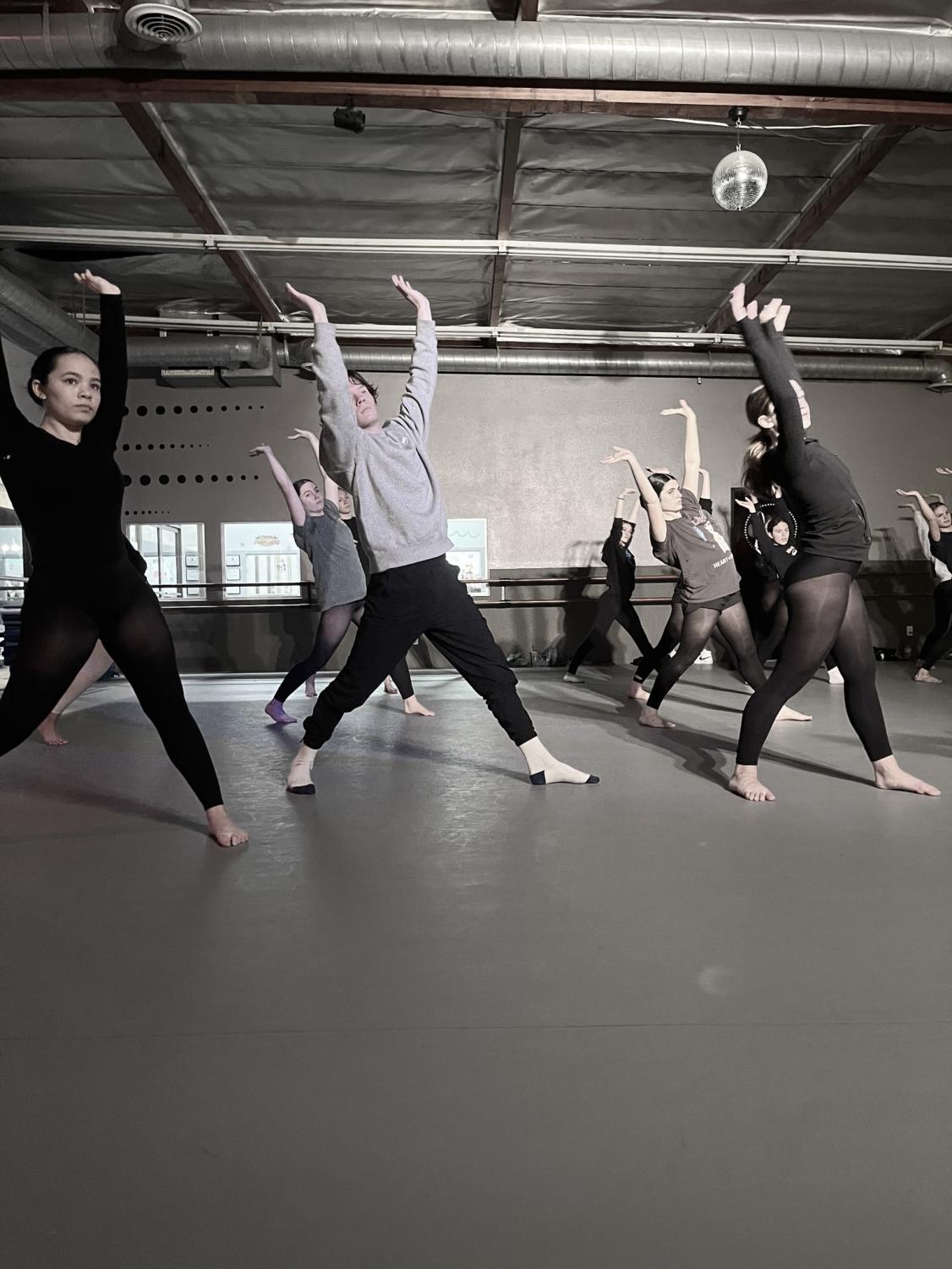Your donation will support the student journalists of Huntington Beach High School. Your contribution will allow us to cover our annual website hosting costs.
Thank you for supporting our program!
The Reality of the Dance World
Disclaimer: This article talks about unhealthy eating habits.
February 1, 2022
To my fellow dancers I ask, why are you a dancer? To those who are not, what leads you to second guess the discipline of this sport? As a dancer, I am forever grateful to have the ability of technical, bodily expression, but oftentimes I lose sight of my love for this art because of the overwhelmingly toxic environment.
To be labeled “perfect” as a dancer, and to fit this criteria of the beauty standard, you must have a slim hourglass figure, flawless skin and hair, and an overly-optimistic attitude in the face of challenges. Picture a ballerina: gelled hair brushed backward, deep red lipstick, glued on eyelashes, and caked-on foundation to cover up any imperfections. A slim, straight body, devoid of curves, that slides easily into any costume and executes routines and performances flawlessly. As elegant as a performer may seem on stage, this grace is not always found behind the curtain.
Local dancers in Huntington Beach revealed their experiences with this oppressive environment, uncovering the reality of a dancer’s unstable eating habits and mental health. Dancers see the good, the bad, the ugly, and now face a stage riddled with toxicity: strict demands from teachers, the judging eyes of fellow dancers, and critical responses from the audience.

Although this sport is a great way to exercise your body and learn both physical stability and mental discipline, the issues that plague the dance world often cause dancers to develop a hatred of themselves and resentment towards the art they once loved. Paige Bridenball, a dancer at the Orange County Dance Center and a freshman at Huntington Beach High School, says, “I love the art of dance but not the environment itself.”
Bridenball’s story is rooted in her competitive dance experiences, where she was an avid competitive performer until she chose to end her journey in the competition world to focus on ballet in a classroom environment. She recognizes that dancers are often too critical of themselves in regards to their body image. “Dancers don’t understand their authentic self because they only see themselves in a leotard and tights,” Bridenball explains.
Teachers play a crucial role in structuring dance classes and do not always consider the detrimental effects of their words. Hoping to avoid the negativity of the competition world, Bridenball escaped to the studio world of dance but was not relieved of the pressure. Comments like “I can see your lunch” have warped her body image. She says that before dance class, she does not eat to avoid bloating because she knows she has to wear skin-tight clothing.
Britta Norquist, a junior at Edison High School and a part of the Academy of Performing Arts (APA) as well as a dancer at Clifton Dance Project, was also victimized by the art form she grew up learning. Although she does not participate in competitions often, the few she has attended have forever changed the way she views herself. “I remember thinking as a kid that I thought I needed to cut back on food the day of competition so I could look skinny in my costume,” Norquist says.
This mindset developed when she was ten years old, and now even as a sixteen-year-old, she maintains this mindset. “I stare at myself in the mirror every day, developing the eyes of a bully rather than that of a best friend,” Norquist says.
Not only at war with herself, but Norquist also struggles with the negativity of dance instructors. “I have had several occasions [in the dance world] where my body has been commented on,” says Norquist. “[Like] I’m too tall and too skinny, but somehow not skinny enough.”
Facing the unreachable standards put in place by dance instructors, senior at Huntington Beach High School Sarah Hart illuminated her negative experiences in the dance world in an essay. “I went out of my way to avoid mirrors and cameras because I found images of myself difficult to look at, ” says Hart.
Overwhelmed by the criticism of her dance instructors, her thoughts of being overweight and ugly transformed to shame and mortification—ultimately leading to a diagnosis of chronic anxiety. “I would go almost full days without eating, only relenting when it felt like there were knives in my stomach,” Hart writes.
Another victim of this toxicity, Gina Cisternelli is an avid performer who wishes to pursue a career in the dance industry but is hesitant due to the problematic environment. She tries to focus on connecting with herself, her fellow dancers, and her teachers, rather than getting caught up in the competitiveness of dance. Despite her attachment to dance being strong, this positive attitude is extremely difficult to uphold in the face of such negativity. “There is an immense amount of pressure put on us dancers that can cause mental health issues both now and later,” Cisternelli says. “Every time I step into the class or on the stage I am overwhelmed with pressure.”
As the competitive dance world continues to evolve, more dancers face the mental pitfalls of perfectionism, anxiety, and many other unhealthy habits. Experiencing this perfectionist mindset, Sophia Cardenas, a performer with the Huntington Academy of Dance, speaks of dance as an art form with endless opportunities but also with endless challenges. “Dancers should not have to worry about their weight when stepping onto the stage. They should be focused on the movement and performing to the best of their ability,” Cardenas says, “Dance competitions value the dancer with the prettiest costume and reward them as opposed to the dancer who articulated the choreography the best.”
Unfortunately, these are only a few stories highlighting the harsh reality of dance. But imperfections and differences are what actually make dancers beautiful.
As a dancer myself, I am a victim of this reality. Dance will always be an escape from the stress of everyday life, but the beauty portrayed on stage is not the full story. The physical and mental burdens of dance often overpower my love for this art, but it will always have a place in my heart. Regardless, I will never surrender to this negativity. Exposing the reality of the dance world, I vow to advocate for those of us who battle the undeserved labels and standards we face every day in hopes of creating a better environment for the dancers of the future.

